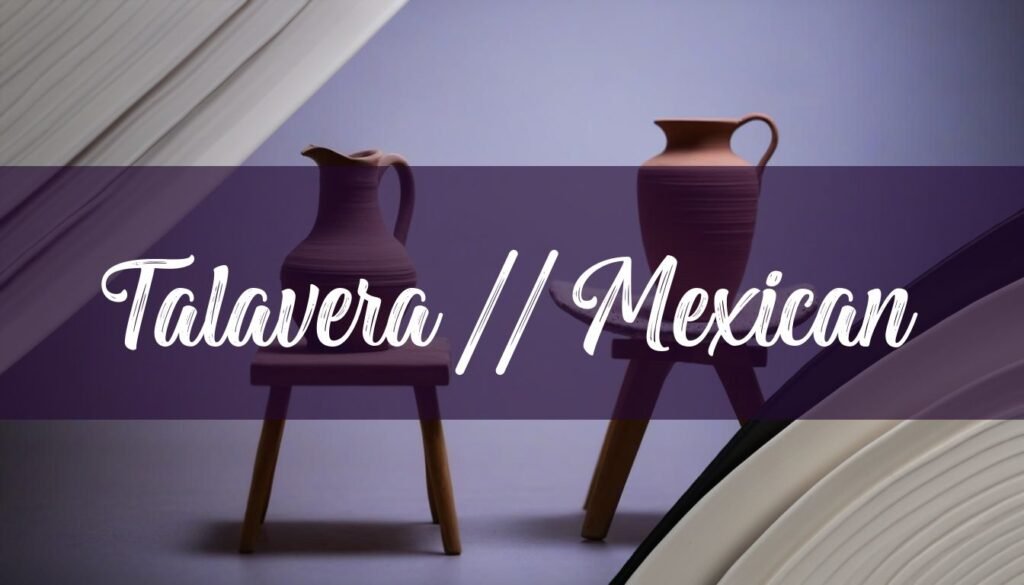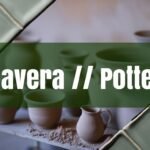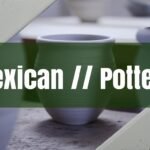Talavera Mexican pottery stands as a vibrant testament to the fusion of cultures and artistic traditions, its history as colorful as the intricate patterns that adorn each piece. Named after the Spanish city of Talavera de la Reina, this uniquely Mexican ceramic has garnered worldwide acclaim for its high quality and beauty. A blend of indigenous and European artistry, the story of Talavera is one of evolution, adaptation, and enduring cultural significance. Talavera is a style of pottery within a larger category of ceramics called Majolica, referring to any earthenware involving handmade pottery, ceramics and art.
Origins and Cultural Fusion
The origins of Talavera pottery trace back to 16th-century Spain, where artisans in Talavera de la Reina combined Islamic pottery methods with Flemish glazing techniques and painting styles from the low countries and Italy. This innovative approach resulted in a distinctive style of pottery that quickly gained popularity throughout Spain, Europe, and the Americas. However, even before the arrival of the Spanish, indigenous cultures in Mexico possessed their own rich pottery traditions, characterized by the use of red and orange clays, primitive firing techniques, and intricate designs often depicting gods or tribal motifs. These pre-existing traditions laid the foundation for the unique fusion that would define Mexican Talavera. More on this tradition can be found in our article about Mesoamerican Ceramics.
The introduction of Talavera pottery to Mexico is often attributed to Spanish monks who sought to adorn the churches being constructed in the new colonial cities. Skilled artisans from Talavera de la Reina were commissioned to teach local artisans the techniques necessary to create the desired tiles and other decorative elements. The city of Puebla, founded in 1531, emerged as a major hub for Talavera pottery production, and it remains one of the few places where craftsmen still employ techniques dating back to the 16th century. Initially, Talavera works from Puebla, known as Talavera poblana, primarily utilized cobalt blue and white glazes, paying homage to the Chinese pottery that influenced Delft pottery and was traded worldwide.
Distinctive Characteristics and Production Process
Authentic Talavera pottery is characterized by a unique combination of materials, techniques, and designs that set it apart from imitations. The process begins with the careful selection and preparation of two types of clay: a dark clay and a light, slightly rose-colored clay, both sourced from the designated Talavera geographic zone of Puebla and its surrounding communities. The clay is cleaned, mixed, and placed in sedimentation tubs to remove excess water, a maturation process that enhances its quality and plasticity. The clay is then kneaded, or “stepped on,” to achieve a uniform consistency and humidity, before being formed into blocks and stored.
The shaping of Talavera pieces is achieved through two primary methods: the potter’s wheel and molds. Artisans either hand-throw the clay on a potter’s wheel to create traditional forms or press the clay into molds to achieve more intricate shapes. Once the pieces are formed, they are stored in unventilated spaces to dry slowly and uniformly. The first firing, which takes place in a kiln at a temperature of at least 800 degrees Celsius, transforms the clay into a hard, porous state known as “jahuete” or “sancocho”. After the first firing, the pieces are sanded to remove imperfections and ensure a smooth surface for glazing. The enamel, a mixture of silica sand, tin, and lead, is applied through an immersion process, creating a milky-white base for the subsequent decoration. More information on preparing your own glazes can be found in our article how to make your own glaze for pottery.
The hand-painting of Talavera pottery is a meticulous and highly skilled process. Artisans use fine brushes made from mule or horsehair to apply the traditional colors, which are derived from natural mineral pigments. The limited color palette typically includes cobalt blue, yellow, green, red, and black, each color carefully prepared according to time-honored recipes. The designs often feature intricate motifs inspired by Mexican flora, fauna, and cultural heritage, reflecting a blend of indigenous and European influences. After the painting is complete, the pieces undergo a second firing, during which the colors develop their characteristic shine and volume. The entire process, from clay preparation to final firing, can take three to six months, highlighting the dedication and craftsmanship involved in creating authentic Talavera pottery.
Identifying Authentic Talavera and Modern Applications
Given the popularity of Talavera pottery, it is essential to be able to distinguish authentic pieces from mass-produced imitations. Authentic Talavera is exclusively produced by certified workshops in the state of Puebla, Mexico, and its nearby communities of Atlixco, Cholula, and Tecali. These workshops undergo regular inspections and verifications to ensure that they adhere to the traditional production methods and quality standards. Certified Talavera pieces bear the signature of the potter, the logo of the workshop, and a special hologram that certifies the piece’s authenticity. The use of only the traditional six colors, the creamy white glaze, and the presence of slight imperfections, which are characteristic of handmade items, are also indicators of authenticity.
Talavera pottery continues to be used in a wide range of functional and decorative contexts. Its durability and lead-free paints and glazes make it suitable for everyday use as dinnerware, coffee sets, and snack trays. Talavera tiles are used to adorn kitchens, bathrooms, and patios, adding a touch of Mexican charm to any space. Large Talavera pots serve as striking centerpieces in landscape design, while smaller pots brighten up indoor spaces with colorful displays of native plants. In contemporary design, Talavera pottery is increasingly incorporated into modern interiors, its vibrant colors and intricate patterns providing a unique contrast to minimalist aesthetics.
Talavera Mexican pottery stands as an enduring symbol of Mexican artistry and cultural identity. Its rich history, distinctive characteristics, and meticulous production process reflect the fusion of indigenous and European traditions, resulting in a unique art form that continues to captivate and inspire. Whether used for functional purposes or as decorative objects, Talavera pottery brings a touch of Mexican warmth and beauty to any setting, serving as a testament to the enduring power of craftsmanship and cultural heritage.





